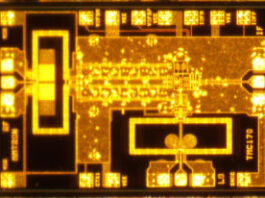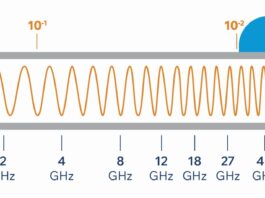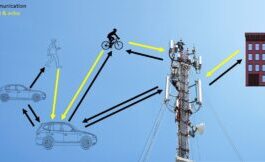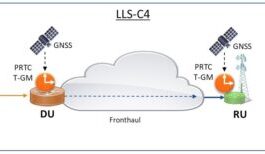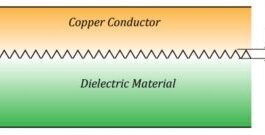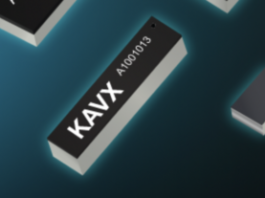
The first two O3b mPOWER satellites operated by SES have launched. Once fully deployed, 11 satellites will significantly improve throughput and latency to areas all over the world. EE World was there for a firsthand video view of the launch.
Cape Canaveral, FL, December 16, 2022 — Many parts of the world including remote land areas on continents, islands, and cruise ships lack adequate internet access. Bringing it to those areas requires satellites that can cover areas where terrestrial networks don’t or can’t exist. Satellite communications provider SES has been delivering those services to internet service providers and governments since 2014 through the company’s O3b constellation of eleven medium-Earth orbits (MEO) satellites. Communication technology has significantly advanced since then. It’s time for a new generation.
Also read: Labour MP Claims Sending Migrants To Holiday Parks Is Akin To ‘Concentration Camps’

SES mPOWER satellites will bring 4G/5G communications to nearly all areas on Earth. Photo credit: SES
Enter 03b mPOWER, an MEO constellation that will, when fully deployed, consist of eleven new satellites. The first two Satellites launched on December 17, 2022, atop a SpaceX Falcon 9 booster. In the video below, EE World editor Martin Rowe takes you can close as you can get without being a SpaceX employee following by the December 17, 2022 launch.
The satellites orbit the Earth at 8000 km, about 5000 miles. Six MEO satellites can cover the planet. Having eleven provides redundancy. This artist’s rendering shows satellites in orbit. While it’s possible to cover the planet with three geosynchronous orbit — 42,164 km or 35,786 miles from Earth’s center — latency becomes an issue. Gamers wouldn’t be be happy with that. Satellites in low-Earth orbit (LEO) don’t suffer from latency issues but full coverage can require thousands of satellites. Indeed, SpaceX has launched some 3500 satellites as of October 2022. Such a large number greatly increases network complexity because ground stations must frequently switch their connections as the satellites pass overhead.
SES expects to begin delivering 4G/5G services from 03b mPOWER satellites to customers beginning in Q3 2023.

Falcon 9 payload: Two SES Ob3 mPOWER satellites on December 16, 2022. Photo credit: Michael Cain
A significant improvement in the O3b mPOWER over the previous generation of O3b satellites is its use of digital beamforming. Where the O3b satellites use analog beamforming to produce ten signal beams to Earth, the O3b mPOWER satellites can produce some 5000 beams to terrestrial base stations. The satellites will work in conjunction with SES satellites in geosynchronous orbit.
Another improvement comes in the terrestrial network. “What I really like about O3b mPOWER is that it integrates satellite technologies with terrestrial technologies,” said SES CEO Steve Collar at a pre-launch press conference. “It makes satellite an integral part of communications.” SES has partnered with Microsoft to bring cloud computing to satellite communications networks. Doing so puts the cloud one stop away from the user, further reducing latency. On cruise ships, that lets operations people adjust their actions in real time because data can be offloaded to the network edge. It also brings computing to passengers, so they have access to gaming and streaming services.
Also read: Daniel Craig Says Gay Relationship In Knives Out ‘Reflects My Life’
Since 2012 SES has brought internet access to remote areas such as the Amazon region of Brazil. Currently, said Collar, the company can deliver 6 Gb/sec services. “O3b mPOWER will light up the entire Amazon region with gateways located in Brazil. That lets mobile network operators (MNOs) keep data local, effectively operating their own networks. They can use our open architecture to customize their services.” Color expects data rates to exceed 10 Gb/sec.

SES has installed base stations on the Cook Islands that provide connectivity to the satellites. Photo credit: SES.
SES also brings internet services to the Cook Islands, a chain of 15 South Pacific Islands in the same time zone as Hawai’i. Phil Henderson explained how his country began using SES Ob3 satellites in 2012. “We’ve grown up with O3b,” he said. “We used to have just a cable for the capital but now we can reach the entire country.”
Satellite design
While SES will operate the mPOWER satellites, Boeing built them in El Segundo, CA. Michelle Parker, Vice President and Deputy General Manager, Boeing Space and Launch, explained some of the challenges that engineers faced when designing the satellites.
“When SES approached us saying the wanted satellites that would cover 99% or the world’s population, we knew that we’d need to develop game-changing technology,” said Parker. While Parker noted that Boeing has been developing digital technology for decades, this satellite is different. Not only is it all digital (except for the RF section of the radio), it required new manufacturing methods.

SES mPOWER first two satellites launch. Photo credit: Michael Cain.
“The satellites must function in the MEO environment,” said Parker. “It’s a condensed digital payload compared to previous generations. We had to develop a new cooling system to dissipate heat.”
After the press conference, EE World asked Parker to describe the cooling system [24:35]. Parker, who started her career as a thermal engineer, described how the satellite has heat-generating electronics plus cables and other components. “In space, there’s no convection to dissipate heat. It’s all radiational cooling and is a difficult environment. We’ve taken the electronics down to tiny components that are smaller and more powerful that those in earlier generations. The amount of heat generated might be roughly the same but is concentrated in a smaller area. You need to move the heat to the radiators on the outside of the satellite.” Boeing engineers designed an active, liquid-cooling system to remove heat from the electronics and transfer it to the cold environment of space.

Falcon 9 carries O3b mPOWER satellite into orbit, December 16, 2022. Photo credit: Michael Cain
Following the press conference, the twenty or so journalists from around the world in attendance went to a viewing area for the launch. Originally scheduled for 4:21 pm Eastern time on December 16, 2022, the launch was delayed to 5:21 and then to 5:48, the last possible minute of the December 17 launch window. In the video below, I first stood near the rocket several hours before launch. The launch sequence begins at 1:17 of the video.
While waiting for the launch, I met Michael Cain, a professional photographer who took the images below. Another photographer told me he’d seen some 150 launches. They never get old. Click on images to enlarge.


